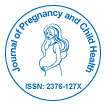A Prognostic Model To Predict the Risk of Cesarean Delivery after Induction of Labour; Development, Validation and Clinical Utility
Received Date: May 28, 2024 / Published Date: Jun 10, 2025
Abstract
Background: Induction of Labour (IoL) is an increasingly used obstetric procedure and cesarean delivery is regarded as a major complication. Evaluating the risk of cesarean delivery after IoL is crucial in making informed decisions between labor induction and pre-labor cesarean delivery. Therefore, this study aims to develop and validate a risk prediction model for Cesarean Section (CS) after IoL and evaluate its clinical utility.
Methods: A prospective cohort study was conducted at the University of Gondar Specialized and Tertiary Hospital, Ethiopia, involving 612 pregnant women with an indication for IoL. Univariable and multivariable analyses were used to select predictors and model selection was based on the loglikelihood ratio test and Bayesian information criterion. Model accuracy was evaluated by the area under the receiver operating characteristics curve (AUC) and a calibration plot. Internal validation was performed using bootstrapping and clinical utility was evaluated using decision curve analysis. A simplified risk score and web calculator were developed for practical use.
Results: The incidence of CS among women who underwent IoL was 51%. The final risk prediction model included three predictors: Parity, history of stillbirth and Bishop score. The model exhibited good discrimination (AUC: 0.82 (95% CI: 0.79 to 0.87) and calibration. After internal validation the model had a similar performance (AUC: 0.82) to the original model, indicating low chances of overfitting. The decision curve analysis demonstrated the higher net benefit of treatment decisions guided by the model across the range of threshold probabilities.
Conclusion: The risk prediction model based on parity, history of stillbirth and Bishop score, demonstrated good discrimination, calibration and clinical utility in stratifying women with an indication for IoL according to their risk of CS. This model has the potential to guide clinicians in making informed decisions regarding IoL and pre-labour CS, thereby improving labour outcomes.
Keywords: Cesarean delivery; Induction of labour; Risk prediction; Prognostic model
Citation: Mekonnen EG, Coenen S (2025) A Prognostic Model to Predict the Risk of Cesarean Delivery after Induction of Labour: Development, Validation and Clinical Utility. J Preg Child Health 12: 698.
Copyright: 2025 Mekonnen EG, et al. This is an open-access article distributed under the terms of the Creative Commons Attribution License, which permits unrestricted use, distribution and reproduction in any medium, provided the original author and source are credited.
Select your language of interest to view the total content in your interested language
Share This Article
Recommended Journals
Open Access Journals
Article Usage
- Total views: 174
- [From(publication date): 0-0 - Dec 08, 2025]
- Breakdown by view type
- HTML page views: 126
- PDF downloads: 48
